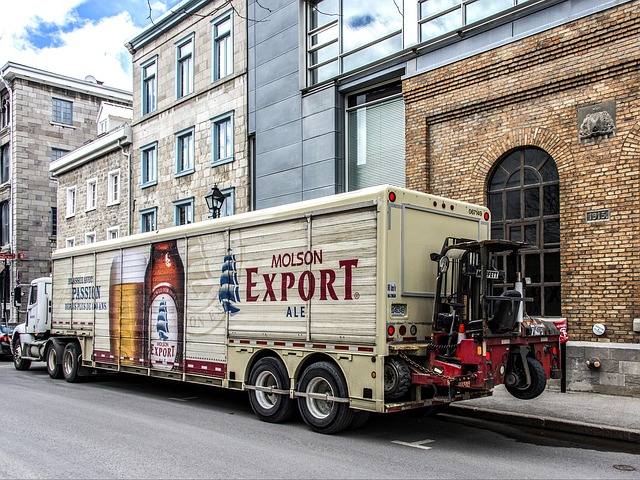Looking to register your car in California? Navigating the process can seem daunting, but we’ve broken down each step for a smooth experience. From understanding the basics of California’s vehicle registration requirements to preparing for a crucial VIN verification, this guide covers everything you need to know. Learn how to gather essential documents, pass inspection and emissions tests, complete your application, and pay fees successfully.
- Understanding the California Vehicle Registration Process
- Preparing for VIN Verification: Gather Required Documents
- Conducting a Vehicle Inspection and Emission Test
- Filling Out the California Car Registration Application
- Paying Registration Fees and Obtaining Your Registration Certificate
Understanding the California Vehicle Registration Process

Understanding the California Vehicle Registration Process
Registering a car in California involves several steps, and one crucial aspect is the verification of your vehicle’s unique identifier—the Vehicle Identification Number (VIN). This process ensures that all vehicles on the road are properly documented and tracked. Typically, VIN inspection is done by visiting a designated registration office or using an authorized mobile vin verifier to check and validate the information associated with your car’s VIN.
In California, you’ll need to present essential documents such as proof of ownership, vehicle title, current insurance, and possibly additional forms depending on your situation. Once your VIN has been verified, along with all other required documentation is in order, you can proceed with the registration process. This typically includes paying the necessary fees and ensuring that your vehicle complies with all state safety and emission standards.
Preparing for VIN Verification: Gather Required Documents

Before you begin the process of registering your car in California, it’s crucial to prepare for the Vehicle Identification Number (VIN) verification step. This process requires a significant amount of documentation to ensure that your vehicle meets all legal standards. Gather essential documents such as the title or registration certificate from the previous state, proof of insurance, and a valid driver’s license. Additionally, you might need to provide a sales agreement or a bill of sale if you recently purchased the vehicle.
For a smoother experience, consider using a mobile vin verification service. These services offer convenient solutions by providing on-site inspections using advanced technology. A mobile vin inspector can quickly cross-reference your vehicle’s data with manufacturers’ records, ensuring accuracy and saving you time. Alternatively, some mobile vin verifiers also offer online platforms where you can input your VIN to check for any outstanding issues before the registration.
Conducting a Vehicle Inspection and Emission Test

Before registering your car in California, it’s crucial to ensure your vehicle meets all safety and emission standards. One critical step is conducting a thorough vin verification (Vehicle Identification Number) inspection. This process involves checking the VIN for any discrepancies or tampering and verifying its authenticity. Many services now offer mobile vin verifier options, making it convenient to complete this requirement while you wait.
During the inspection, your vehicle will also need to pass an emission test. California has strict environmental standards, and this test ensures your car’s exhaust system is functioning correctly and isn’t emitting harmful pollutants. A vin inspection can help streamline this process by providing a comprehensive review of your vehicle’s history and ensuring it complies with all necessary safety checks.
Filling Out the California Car Registration Application

Filling Out the California Car Registration Application involves a series of steps designed to ensure accuracy and completeness. Begin by acquiring the necessary forms from the California Department of Motor Vehicles (DMV) website or in-person at a local DMV office. Fill out all required sections, including detailed vehicle information such as make, model, year, and color. The key component is providing the Vehicle Identification Number (VIN), which serves as a unique identifier for your car during the registration process and beyond.
One helpful tool available to streamline this process is a mobile VIN verifier or inspector. These services allow you to quickly and easily verify the VIN accuracy of your vehicle, ensuring that all information matches before submitting your application. This step is crucial for maintaining accurate records with the DMV, facilitating efficient car registration, and potentially preventing future issues or disputes related to your vehicle’s ownership and history.
Paying Registration Fees and Obtaining Your Registration Certificate

After ensuring your vehicle meets all necessary requirements, it’s time to pay the registration fees. These fees vary based on several factors like the type of vehicle and its emissions status. You can typically complete the payment process online through the California Department of Motor Vehicles (DMV) website or in-person at a local DMV office. Once your payment is processed, you’ll receive your Registration Certificate, which confirms that your vehicle is legally registered in California.
Obtaining your registration certificate involves verifying your Vehicle Identification Number (VIN). This process can be accomplished through a mobile VIN verification service, offering a convenient and efficient alternative to traditional methods. A reliable mobile VIN verifier ensures accurate and swift confirmation of your vehicle’s details, enabling you to finalize the registration process with ease.
Registering a car in California involves several straightforward steps, from understanding the process and gathering documents to conducting essential VIN verifications. By ensuring your vehicle passes the required inspection and emission test, you’ll be well on your way to securing your registration. Completing the application form accurately and paying the applicable fees will result in receiving your official California registration certificate. Remember, a properly registered vehicle ensures legal operation on California’s roads and access to essential services.
